Potted history and photo gallery
Please note that this text is an extract from a reference work written in 1990. As a result, some of the content may not reflect recent research, changes and events.
A large housing estate which lies between Round Hill and Hollingbury , and Ditchling Road and the Lewes railway. The name belonged to one of the large open fields or ‘laines’ of the parish of Preston in the early nineteenth century, but there was no housing development until the 1890s when the Hollingbury Road/Roedale Road area was built; the Hertford Road area followed in the 1920s. The council estate to the east was built mainly in the early 1950s, but the Brentwood and Uplands Road areas were added in the 1960s, while the tower-block flats off Upper Hollingdean Road opened in 1966. In 1981 the Hollingdean area had a population of about 8,000 {277}.
Much of the land was associated with Harrington Farm , which stood on a site between Hollingdean Terrace and the southern end of Hertford Road from the mid nineteenth century until the 1920s; in 1931 Hertford Road School was built on the site of the farmhouse. The only buildings in the area now surviving from before 1890 are Lower Roedale cottages and stores in Stanmer Villas, which were actually situated in the parish of Patcham. Once part of the Roedale Model Dairy Farm, the remaining flint buildings and cottages date from the early nineteenth century and are used by the council’s Parks and Recreation Department; the corporation’s Roedale Nursery lay to the east until the 1950s, and an associated mid-nineteenth-century house stands nearby.
St Richard of Chichester’s Church and Hall, The Crossway, is a single-storey chapel of ease to St Matthias’s Church, and was built in 1954 to a design by Clayton, Black and Daviel {311}. Hollingbury Gospel Hall, Hollingdean Terrace, opened as the Hollingbury Hall in 1932 and is now used by the Christian Fellowship. Hollingdean Community Centre, Thompson Road, opened in December 1985.
Hollingdean Road was originally known as Dog Kennel Road from the Union Hunt’s kennels which were on the site of the abattoir. It ran from the Lewes Road straight through to the Jolly Brewers at Florence Place to form the Brighton/Preston boundary until 1928 {112 }, but the western part is now a private access road to the borough council’s technical services depot (once the site of the town’s dust destructor – see “Refuse”), wholesale meat market and to the former municipal abattoir. This latter facility opened on 30 June 1894 and put an end to many of the forty or so insanitary slaughterhouses that were to be found in the more densely populated areas of the town. Nearly 7,000 animals were handled in the first year, and by 1928 the figure had risen to some 34,400 animals with only eleven other slaughterhouses remaining. However, after several years of private leasing the abattoir was closed in 1986 on hygiene grounds. No.84 Hollingdean Road, a knapped-flint and brick house, was the home of the abattoir superintendent. A siding from the Lewes railway line formerly served both the abattoir and the depot.
Any numerical cross-references in the text above refer to resources in the Sources and Bibliography section of the Encyclopaedia of Brighton by Tim Carder.
The following resource(s) is quoted as a general source for the information above: {83,93,107,109,115,123,126}
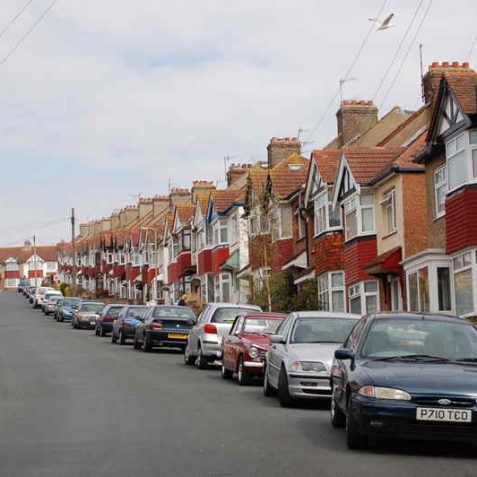
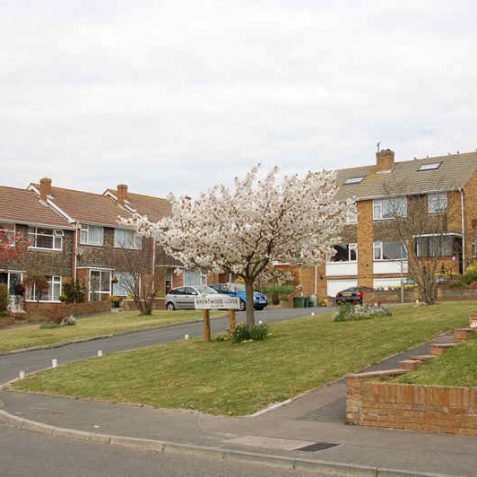
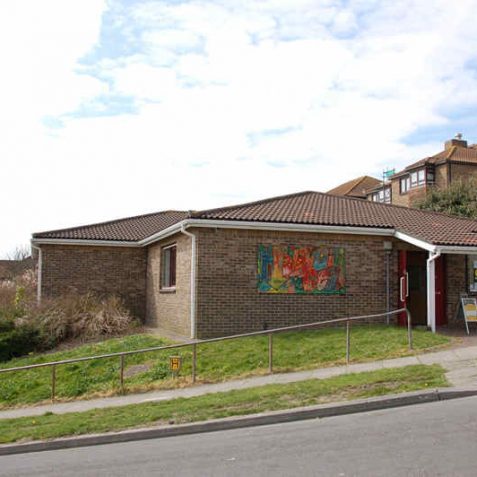
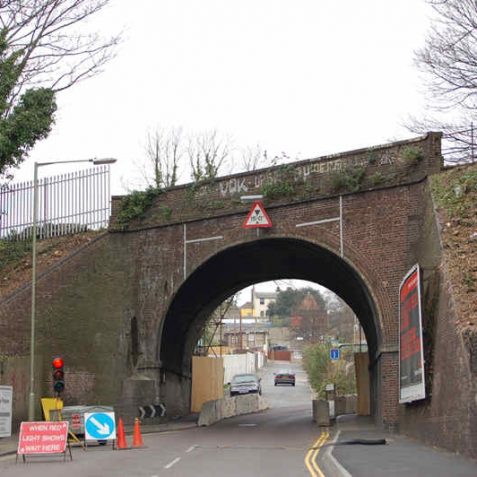
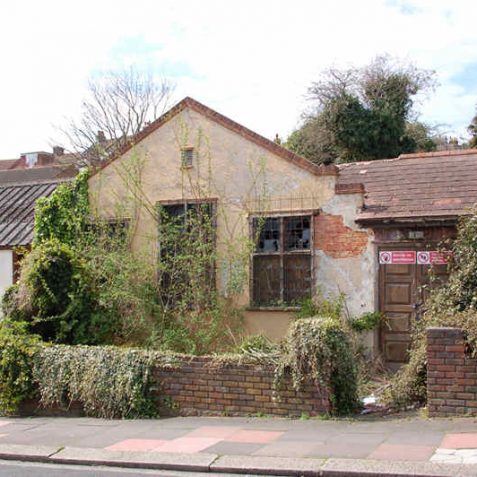

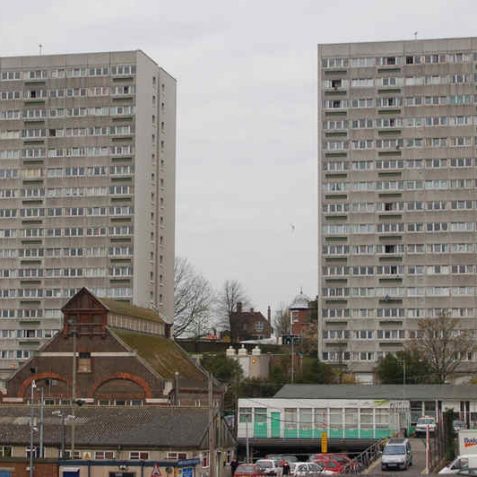

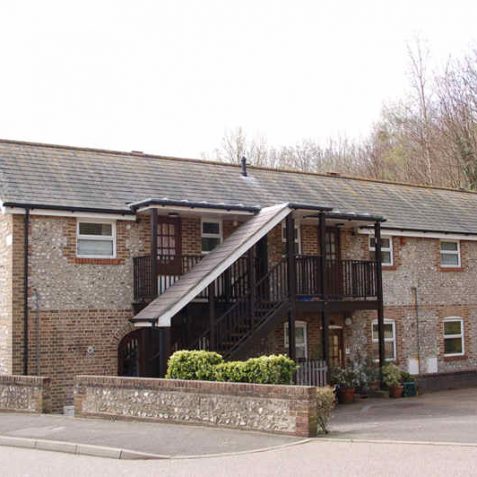

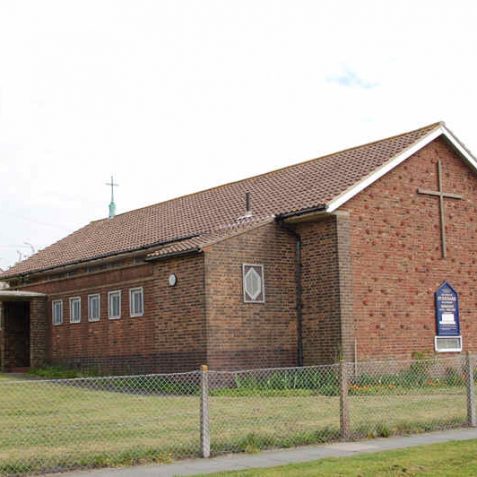





Comments about this page
I would love to see photos of my old infant school, St Joesphs School, Davey Drive, please. Thank you
Bridget – I am going to research an article for Hollingdean News soon on St. Josephs, so hopefully we can find some photos to put here for you. Which years did you attend there? You can contact me via hollingdeannews@hotmail.com
I was interested to see the photo of Holligdean Terrace. Shortly after being evacuated to Brighton in September 1940, with my mother and brother, my mother rented 77 Holingdean Terrace. Next door, between us and No.79, was a shop. I visited the road recently and noticed that the shop is now a private garage! I wonder if those who ran the shop are still in the area. I believe that they moved to Ditchling Road shortly after the war. We brothers attended DitchlingRoadSchool (now renamed). The Brighton children used it for one half of the day and we evacuees used it the other half. I seem to remember that we went alternately mornings or afternoons. The remainder of the day was spent on excursions with our teachers and those mothers who had come down to Brighton looking after us. Is anyone old enough to remember those days? P.S. I think that the persons in No.79 were Mr and Mrs Allen.
It would be nice if someone would remember to put a photo of St Joseph’s infant’s school, Davey Drive. I went to that school back in the early 70s – a brilliant school. Please can someone get a photo of it?
The hall has now been redeveloped. There have been houses built on the garage area but the hall itself is still there, also redeveloped, but I am not sure what into. It has been done really nicely and fits in with the surrounding houses well. Very much improved area now. I grew up in Roedale Road and attended the hall as a Sunday School and various other clubs for local children. It was a nice friendly place, it was sad to see it so run down. My own children went to Sunday School there as well – until we moved away in the early sixties.
Does anyone have any memories to share of The Talbot Tool Company in Roedale Road? I worked there in the mid 60s until we all moved to KDL Works on Crowhurst Road, leaving in 1968. The works in Roedale Road always seemed to have a good atmosphere.
Re: Talbot Tool Co. 1952 (Tools and Bushings) My first job! Mr. Bennett and Mr. Griffin were owners. I worked in the office on Roedale Rd. We had contracts from DeHavilland Aircraft, Roe aircraft and many others! It was a great place!Left there in 1956. Got married, came to live in the US, been here since! I come ‘home’ often and will go past the old factory and wonder about those I worked with.
I worked at the Talbot Tool Co in the upstairs sales office – would be about 1960 – I met my first wife there. It always smelt of fresh polish when you went in the front door. Tony Griffin ran the sales office upstairs and Mr Bennett had his office on the ground floor.
I am looking at buying a property in Hollingdean but have had mixed reviews about the area. Do people who live/lived there see it as a safe area to live? Are there lots of students living there? Thanks
This bridge brings back some very great memories. On the right hand side (behind the red sign), a chimney sweep used to dump his soot in a shed there, as a kid I remember playing in there, you can imagine what I looked by the time we had finished. On the right hand side , somewhere in the back there used to be a place where they used to dump cars, I’m talking old cars. I was only four or five at the time, around about 1941-42. If anyone has anymore history of that place I’d be pleased to hear from them.
My mother, Joan Wallis (she recently died, aged 93 years) remembered being at the consecration of St Richard’s church in 1954. I believe that the consecration was conducted by Bishop George Bell of Chichester, who became very well known during the war for his criticism of the bombing of German civilians. My mum said that she remembered that he had very blue eyes. Much later, I and a friend, Paul Cornford, erected the first wooden cross on the wall, facing ‘The Crossway’. The cross had been carried in procession around the Parish (St Richard’s was a ‘daughter’ church to St Matthias, on the Ditchling Road), this was when Rev Arthur Wilson was Vicar of St Matthias’. St Richard’s was one of a number of churches built in Sussex in the postwar period – another example is the Methodist church at Hollingbury – and it was said that the site had been wanted by the Catholic Church. It was also said that the community would rather have had a pub! It was hoped that the design of combined church-and-church-hall (the sanctuary was hidden behind folding doors when not in use) would allow for community activities, but there was an early disagreement over the hire of the hall for wedding receptions on a Saturday evening: the stale smell of booze and fags was not conducive to worship on the following morning! The community association at the time believed that a hall separate from the church was needed, and eventually that hope was realised.
As Professor Joad put it…’It all depends on what you mean by Hollingdean’. It is a diverse area, 1920s terraces in the south [my mum grew up in those] with some 1930s semis rising north of ‘The Dip’. Pre-war terraces to the west rising to Ditchling Rd [although estate agents will call those ‘Fiveways’]. Early 1950s flats in Stephens Rd and in Davey Drive originally housed families from the slum clearance around the New England area [my uncle and auntie], and 1970s private housing around Brentwood in the north and down towards the railway line and Moulsecoomb Station. Late 20th century Housing Association and others infill areas in the north. Many students rent because of its physical proximity to Brighton University and the rail link to Sussex, as well as a frequent bus service. As with all areas there are some parts less salubrious than others and some roads regularly feature in The Argus crime reports! However, there was a nice farmers’ market type event in The Dip before Xmas which brought out the Hollingdean middle classes in bulk! Ditto the organic gardening events in the summer at Lynchet Close. You need to take a field trip and wander around the area and see for yourself. The physical attractions of the area, bordering the National Park and with access to Hollingbury Camp, Burstead Woods and Hollingbury Woods should not be underestimated.
Thank you, I have done that and personally really like the area but I have only lived in Brighton for six months, renting in the centre. I like up around Brentwood Road and Lynchet Close- the open space behind and views are just stunning. House prices also seem much more reasonable than many other parts of Brighton! I suppose my main concern with not knowing the area is if there is much crime in the location- some people I work with seem to think I would be mad to buy there, others say it’s ok but I was hoping some locals to the area could give me their opinion.
There is much myth and nonsense talked about estates such as Hollingdean (in the trade we call them ‘periphereal estates’); they are supposed to mimic the social mores of the so-called ‘inner-city’. These are generally broad reaching generalisations. The more people treat an area as their home and participate in the activities and life of any community, the more the good of that area will be apparent. Brighton has a very high proportion of rented property, a large transient population and low educational attainment areas, with a weak, often seasonal employment sector, which can exacerbate difficulties and lead to some areas gaining a ‘reputation’ . This is often a single street or block of flats which can stigmatise a whole estate, unfairly. If you do move into Hollingdean then ‘The Friends of Hollingbury & Burstead Woods are always looking out for volunteers!…and you get a cup of tea and several biscuits out in the woods on work days!
Went to cubs at St Richards, probably early sixties.
Regarding Talbot Tool Co; my father, John Cooke (now 96), worked for the company from the mid 1950s up until his retirement in the 1980s. By that time, the factory had moved from Roedale Road to the Hollingbury industrial estate. My mother, Peggy Lennon, also worked there in the mid 50s and that is where she met my father. The people that I remember from my childhood visits were Ellen Fleckner (auntie Ellen!) who worked in the kitchen (she made the best apple pie that I have ever eaten), Jack, who had lost a leg in a war and used a crutch to support himself. I also recall Bill Beech and ’Wally’ who drove a green van. I notice that, My Brighton & Hove, has a page about the Hollingbury Industrial Estate so some of the information on this page crosses over. http://www.mybrightonandhove.org.uk/page_id__5836.aspx
Add a comment about this page